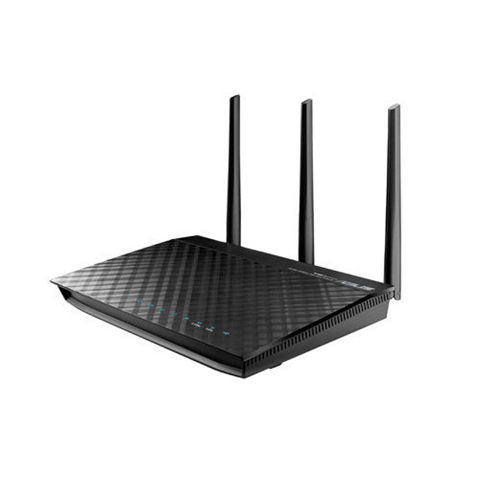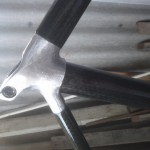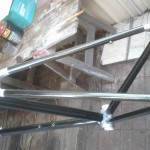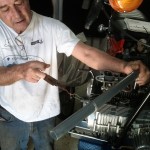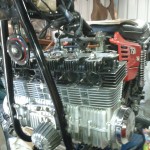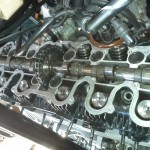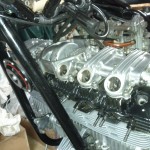I have recently started to work from home – its great but you need a rock solid connection to the net. I’m on a wireless connection in my office and every time someone turned the microwave on the connection dropped out – very annoying for the 2 months it took me to figure it out.
I have been using a really old WRT-54G wifi router for about 5 years, running dd-wrt. These units are getting very old, especially as the one I have are v1 and v2 units, I recon they must be about 10 years old. They were very good in their day but they run on 2.4Ghz band so microwaves can be an issue so I lashed out an bought the current best WIFI router – the ASUS N66U.
Its a pretty mean looking unit and by all accounts a clanger of a WIFI router but my home network has my m0n0wall router assigning IP address to the LAN (both wired and wifi). I needed a wifi router firmware that supported forwarding the DHCP function to my m0n0wall router and as a result the ASUS stock firmware wasn’t going to cut it (or at least not that I could find) and so I needed to load the N66U with dd-wrt as well.
I bought the N66U about 3 weeks ago, read about getting dd-wrt on it and it looked pretty straight forward. What I didn’t realise is that the unit I purchased was hardware version B2.
I tried installing brainslayers dd-wrt.v24-21676_NEWD-2_K3.x_mega_RT-N66U but it resulted in a boot loop, which isn’t good, so I flashed the stock firmware back on it by accessing the units recovery mode (you hold down the reset button while you power on the machine and then point your browser to it on 192.168.1.1 in case you wonder how you put it into recovery mode) and then put the unit back in the box for a week or so while I read a bit more about the various frimwares available and the issues people have faced.
Flashing of version B2’s is fairly thin on the ground at the moment so here is what I ended up doing.
Using the stock ASUS firmware I chose the upgrade firmware option in the web interface and upgraded to Merlins firmware which looks a lot like ASUS firmware but with a few tweaks, one of which is that you can see what version CFE is installed on the your N66U, it also gets you ssh access to the router. The CFE version on my brand new unit – built in 2013 was 1.0.1.0 which may explain why dd-wrt.v24-21676_NEWD-2_K3.x_mega_RT-N66U wouldn’t flash properly.
The majority of noise around the net on this unit is that you needed CFE boot loader 1.0.1.2 or 1.0.1.3 to get the custom firmwares to flash and so I resolved I had to update my boot loader to 1.0.1.3 using the method set out here.
The CFE update script assumes you already have 1.0.1.2 and so you need to make some changes to the update script (cfe_update.sh) before you can run it. Basically you need to extract the tar ball of the CFE updater you download, then with the cfe_update.sh file you find and replace anywhere it say 1.0.1.2 to 1.0.1.0. Once this change has been made you need to copy the CFE update files to the N66U using what ever methods works for you – I used scp. Once the 4 files needed are in the N66U you run the cfe_update script and update your CFE. Make sure you back up a copy of the old CFE and a copy of the new CFE, again use what ever works for you to get it off the router, I used scp again.
OK, now that you have updated the CFE boot loader you can update to firmwares that are 64MB in size, you must not flash a 32MB firmware from now on.
At first I flashed brainslayers dd-wrt.v24-21676_NEWD-2_K3.x_mega_RT-N66U however this started having some issues after a little while and so I changed firmware to Fractal’s 64K dd-wrt build which can be found here.
Of course you must do the 30-30-30 NVRAM clearing before and after each firmware flash (apparently).
The firmware has so far been running fine but, my microwave issue has not been solved. I failed to note that the laptop I used for work doesn’t support 5Ghz WIFI so all I have gained is some experience with hacking the N66U – others on my network will no doubt enjoy the increased speeds as their machines support 5Ghz 🙁
Thanks to the following forums and links in getting me to this stage.
http://forums.smallnetbuilder.com/showthread.php?t=8259
http://charleswilkinson.co.uk/2012/12/22/dd-wrt-on-the-asus-rt-n66u-with-64k-cfe/

